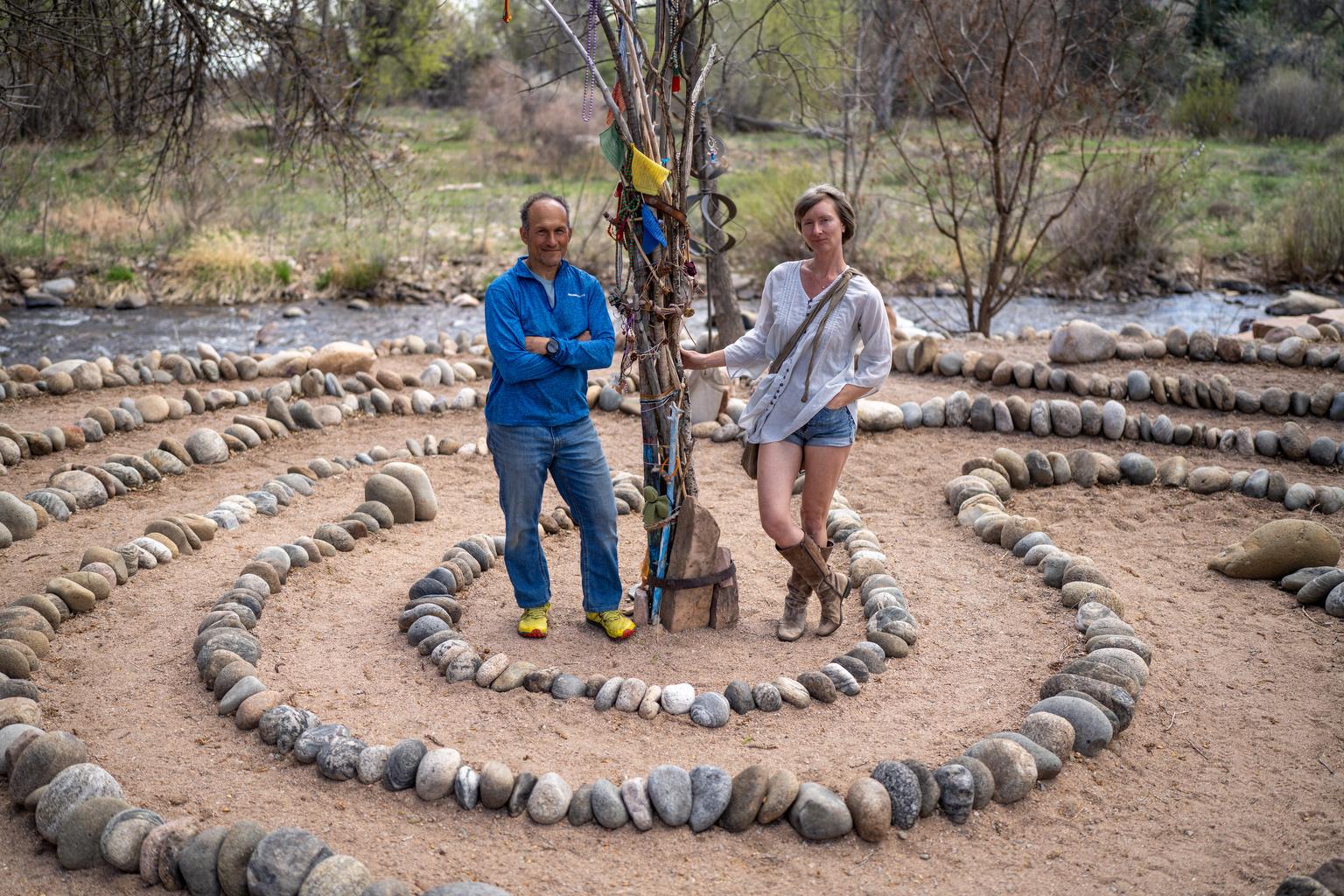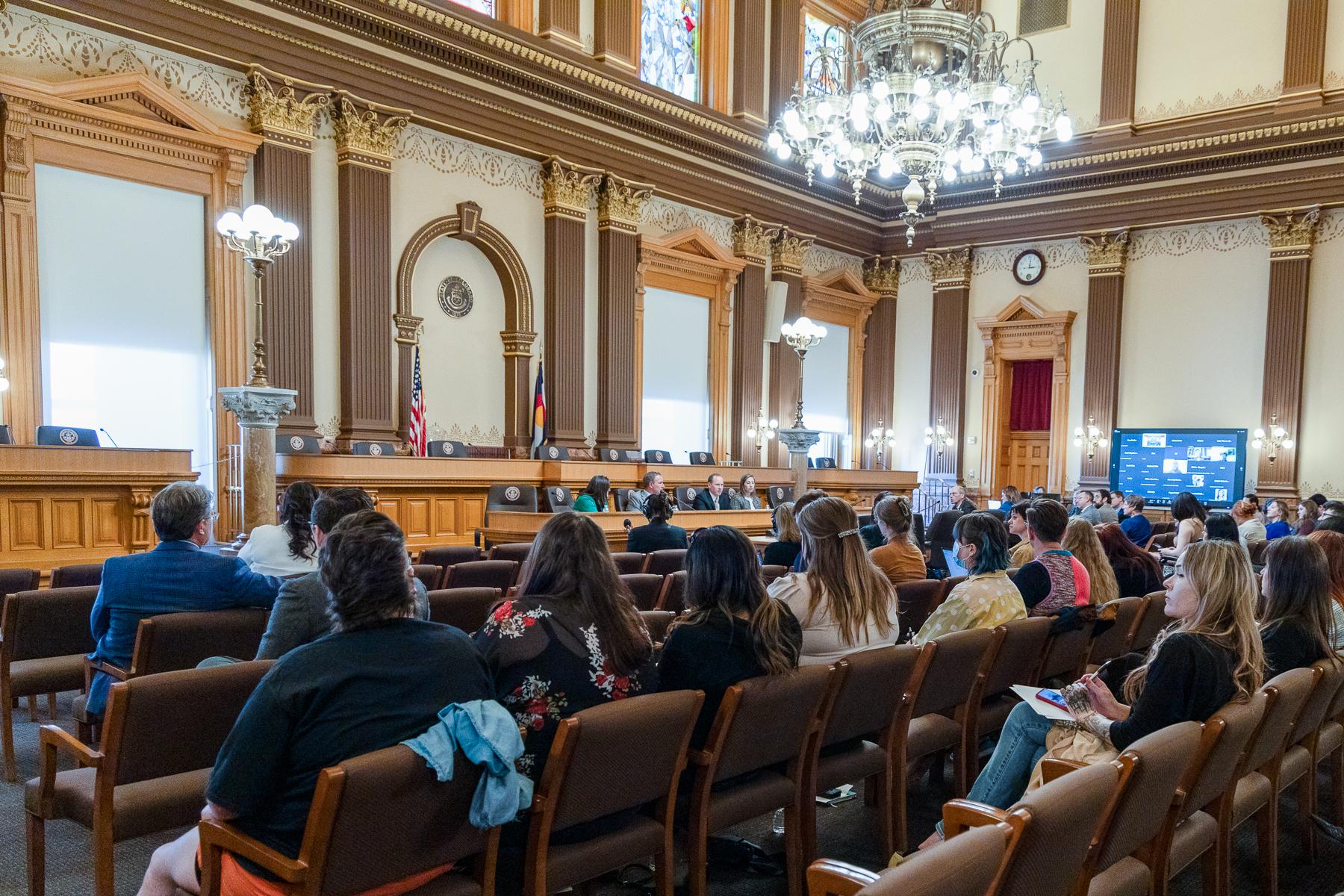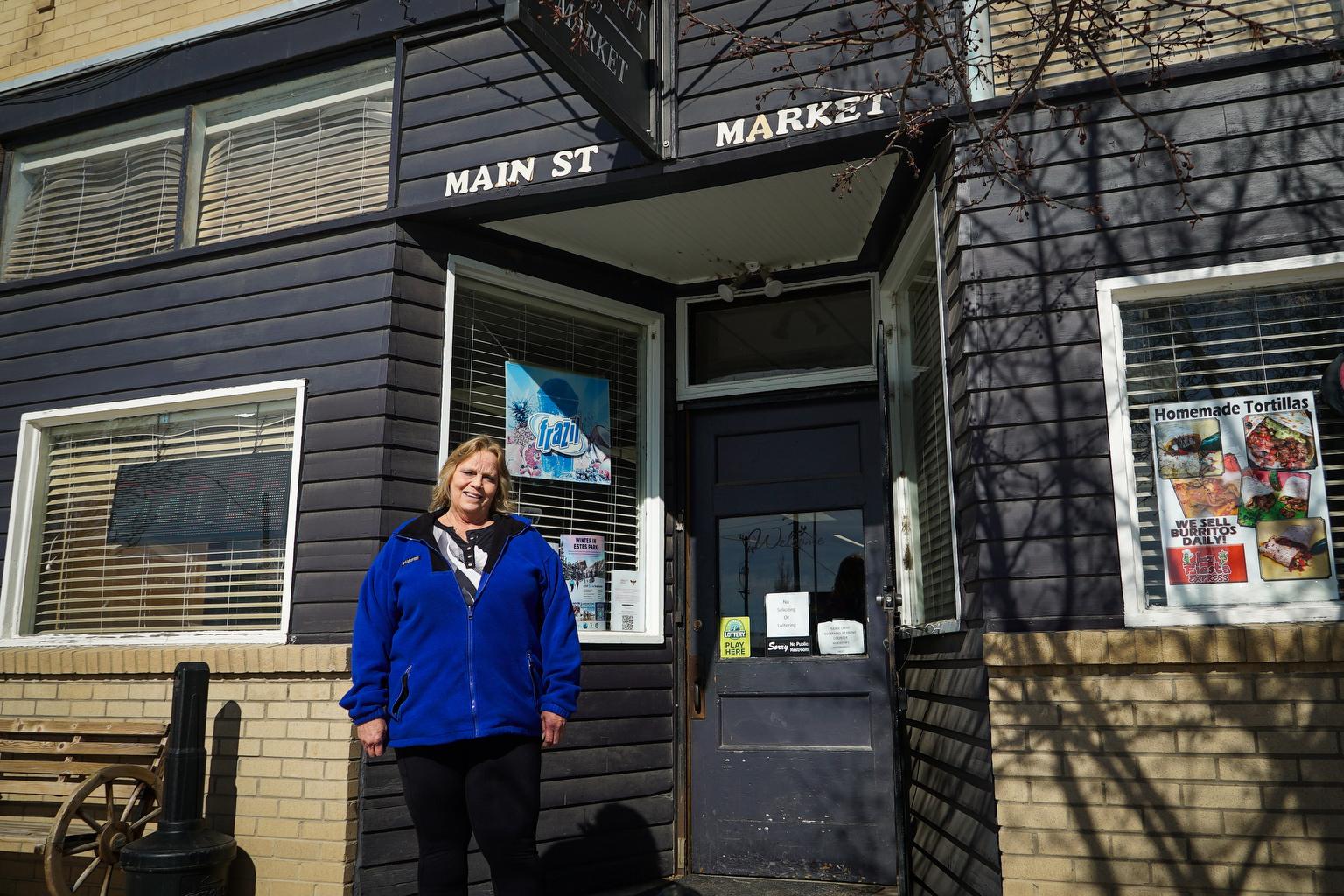
Many dyslexic students spend their summers not on vacation, but poring over cue cards with spelling rules.
Eleven-year-old Beck is one of those children.
It’s just an hour after sunrise when his journey into the mountains begins. His mom, Caron Trout makes the hour-long trip to the Rocky Mountain Camp, a five-week daily summer camp in Indian Hills west of Denver that gives dyslexic children specialized tutoring many families say is unavailable in public schools.
Beck wasn’t diagnosed until second grade. Even that's considered late. By second grade, many dyslexic children, without proper intervention, think they are stupid.
Twenty percent of students with learning disabilities -- of which dyslexia is the most prevalent -- drop out of high school, according to the National Center for Learning Disabilities. About two-thirds graduate with a regular diploma. And perhaps as many as 15–20 percent of the population as a whole—have some of the symptoms of dyslexia.
Along the way to camp, they stop to pick up Beck’s friend Tommy, also 11. Both are gentle, attentive boys. Soon, the two of them are engrossed in John Flanagan’s “Brotherband Chronicles.” They listen to an audio-book so they can get lost in literature without the struggle of decoding written words.
The boys try to explain what dyslexia is like.
“Our eyes, they bunch up everything, we miss short words,” says Tommy.
“We see everything," Beck emphasizes. “We see the words as they are but our brain instead of taking the highway, like other people do, straight to it [the word’s meaning] fast --we take the scenic route and sniff all the flowers on the way.”
Learning with dyslexia presents a stigma and that can make dyslexic children the victims of bullying. We’re not using the last names of students in this story.
Though the words look like a jumble of letters, dyslexia is not a visual problem. Dyslexics struggle with decoding and interpreting written words. Writing can also be a struggle.
“It’s impossible to get it out,” says 11-year old Hadyn, referring to words on paper. “You stumble for words; at least I stumble for words. It’s just so difficult.”
“When you’re sitting next to someone and you’re doing your work and you see they’re already done and you’re like, ‘huh, I wish I was that person. It takes forever to do something,’” says a boy named Caleb.
And it’s exhausting.

Even when it seems like you are reading fluently, says 12-year-old Austin. “Really, inside your brain, it’s frying your brain and you can barely think after you’re done reading a chapter of a book.”
‘Eat Steak With Bread’
The camp starts with jokes around a campfire and then gets down to business. More than half the day is spent on reading and writing, trying to boost accuracy, fluency and comprehension. There’s art, writing, one-on-one tutoring and study hall to work on what you learned in tutoring. Then after lunch, there’s keyboarding and reading fluency. In the late afternoon, the kids get outside for hikes, scuba-diving, building forts, kayaking, and rock climbing.
The camp’s curriculum is based on a method of instruction called Orton Gillingham, which was developed in the early 20th century. It involves intensive, structured, tutoring; kids learn dozens of rules of reading that build on one another, using all the senses. Sometimes they’ll use chips with phonemes (the smallest unit of sound) written on them, play games with sounds or they’ll draw images of syllables.
Literacy tutor Julia Boldrin explains dyslexic kids need rules to help them put the puzzle pieces of words and language together in the right way.
“If we can teach them the solid rules of the sounds and build that automatically through drill and practice – they’re able to start realigning the words that they see on pages,” Boldrin says.
Beck and Boldrin begin his session reviewing dozens of spelling rules and sound combinations.
“’E and A together make three sounds,” says Boldrin. “What are those sounds?”
Beck gets two of them correct but misses a third.
“How do you remember the three sounds?” she asks.
“Eat steak with bread,” says Beck.
Each time a dyslexic child comes to a new word – or even an old one – they must retrieve one of dozens of rules, like the following one Beck recites without skipping a beat.
“The 't-c-h,' 'c-k' and 'd-g-e' come after a short vowel sound, and the 'c-h”,' 'k' and 'g-e' come after a consonant, vowel team and a long vowel sound,” he says.
Beck is serious and focused. He knows this is his chance to unlock the mysteries of reading and writing. The kids here are desperate to learn.
“I have a composition book filled with spelling rules and syllable types and prefixes and suffixes that I get to take home,” he says proudly.
‘Ask Any Question You Want’
Boldrin gives Beck time to process what he’s learned before moving on to the next rule. It’s time that many children don’t get in a regular classroom.
The camp’s executive director Joyce Bilgrave says for a non-dyslexic child – about 70 percent of the kids in a classroom - it takes about eight to 10 times seeing and saying a word, or “exposures," to master a sound or rule. A gifted child often gets it on the first try. For a dyslexic student to learn that same concept takes 20 to 40 exposures.

Bilgrave says the teacher must teach to the 70 percent.
“She throws a little help to the gifted, and she tries everything she can with the dyslexics, but if you’ve got to get 20 or 40 exposures before you master it, she cannot hold her class until our dyslexic children have mastered something,” says Bilgrave, who has worked in the field of dyslexia for 45 years.
The building block of reading is mastering the phonemes, the sounds of the language.
“We’ve got bright kids here in the fifth and sixth, 6th grade who don’t know all the sounds of the language,” Bilgrave says. “They’ve never been taught them, they’ve never mastered them.”
But the kids say the camp gives them the kind of focused, slow instruction they need, that they can’t get in their public schools.
Several years ago, 11-year-old Tommy’s 2nd grade teacher called him a “problem child” who wasn’t trying. He’d be kept in from recess and he begged his mom not to go to school.
Tommy says at camp “they don’t make it seem like, ‘Sit at the desk. I’m going to teach you. Don’t say anything.’ They’re like, ‘Raise your hand and ask any question you want and you can add suggestions of a game if you want to.”
Getting a diagnosis takes parents who push, and pay
In cash-strapped public schools, many teachers aren’t trained on the warning signs for dyslexia. The screening Colorado kindergartens get is not considered a diagnostic tool for dyslexia. When Beck’s mom, noticed he was struggling in kindergarten, teachers told her to be patient. That he’d catch up. They finally paid to have Beck tested.
“The week that Beck was diagnosed, I had asked the reading specialist at the school ‘do you think he’s dyslexic? Could it be dyslexia?’ and she said, ‘oh no, he’s way too bright to be dyslexic,’” says Caron Trout.
That is one of the many myths about dyslexia. In fact, many dyslexics are gifted. But Trout says Beck’s diagnosis didn’t change the way the school was teaching him to read. Boulder Valley School District began piloting an Orton Gillingham-based program last year – to about 30 students. Students who qualify for the intervention get it an hour minimally three times a week or daily for half an hour.
“We piloted it last year and wanted to ensure if we were going to be able to see growth in students with dyslexia so right now using on a small scale and do expect to expand it ,” says Angel Stobaugh is the district’s literacy director.
In the beginning stages, Stobaugh says the district wants to make sure they aren’t over identifying and over using an intervention. For the coming school year, Boulder Valley Schools is targeting more training in Orton Gillingham-based instruction or special education teachers.
“As we continue to educate our teachers and develop our interventionists and interventions, I believe that we would be able to provide adequate and appropriate instruction needed for students showing signs of dyslexia,” she says.
In the meantime for Beck and other dyslexic students in the district, parents say small group instruction is not enough. Not enough one-on-one tutoring, not enough repetitions. So options are private tutoring at more than $100 an hour, or Hillside School, a private school for children with dyslexia, which Beck now attends for a half day.
Trout says it’s a struggle for her middle class family.
'All The Kids Would Laugh'
Joyce Bilgrave says feelings of self-doubt and shame start early, around second grade. By fifth grade, the shame can turn into anti-social behavior that just gets worse until kids drop out.

“Kids will invest themselves until they’re feeling there is no point in investing in anymore, and that’s when it starts, ‘I’m dumb, I’m stupid, I can’t do it anymore, there’s no point,’” she says.
Some of that early shame is fueled by how other children at school treat children with dyslexia.
Sitting in a circle outside, the children talk about how many of them have been bullied for their dyslexia. Almost all the campers raise their hands.
“Not sometimes,” says 12-year-old Austin. “Loads of times.”
He remembers 4th grade being the hardest. Austin says when the teacher had the class read out loud, he asked to skip.
“I would stumble on every other word and all the kids would laugh,” he says.
Austin says teacher were frustrated and he’d stay inside at recess because his work wasn’t finished.
“They thought I was just being disruptive and I actually wasn’t I was… I couldn’t do anything and they wouldn’t give me all the help I needed.”
His parents discovered the camp and now, for the most part, Austin is pretty caught up.
“My dad always said, ‘There were three types of dyslexics; the angry dyslexics who would get mad at absolutely everything, the class clown and the shy dyslexic that doesn’t talk to anybody.’ I would say I’m probably the class clown,” he says. “When I’m funny, all my friends laugh. I guess it just makes me feel better, like I’m not a loser like all those other kids tell me I am.”
Now, the bullying has pretty much stopped and Austin feels optimistic and hopeful about his future.
"There Are More Kids Like You"
Afternoon activities are put on hold one day. There is a fierce rainstorm outside. The kids are laughing, happy and comfortable around one another. Perhaps more than keyboarding or fluency skills the Rocky Mountain camp gives them something else.
“I think this camp is awesome because you get to know there’s more kids like you out there in the world,” says 9-year-old Mitchell.
Around the last campfire circle, kids say they feel safe reading and writing around other dyslexic kids – and that makes them progress faster.
The children hand out ceramic “buddy beads” to each other. They call out the name of another child and share something they admired or liked about what the child did that day.
Heather Fleming says her son gained a year-and-a-half’s worth of growth in reading in five weeks. But she says the best thing is the camp undoes the damage kids have suffered in school.
“The most important gift you can give to a dyslexic child when they are damaged is their self-worth back,” she says.
On the car ride home, Beck is exhausted but smiling. His camp group got to go scuba diving and he told his mom it was one of the best days of his life. In the back seat, Beck clutches his i-pad. He’s not looking at it, he’s looking out at the mountains. But he’s listening intently, absorbed in a novel.
He’s reading, in his own way.
Resources









